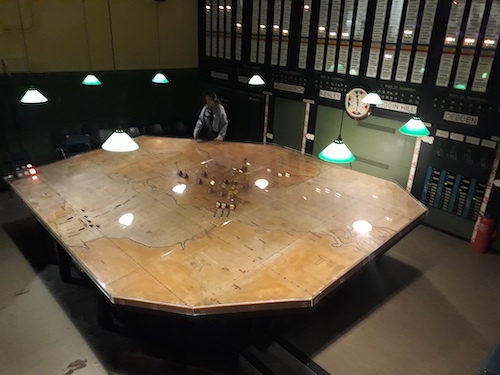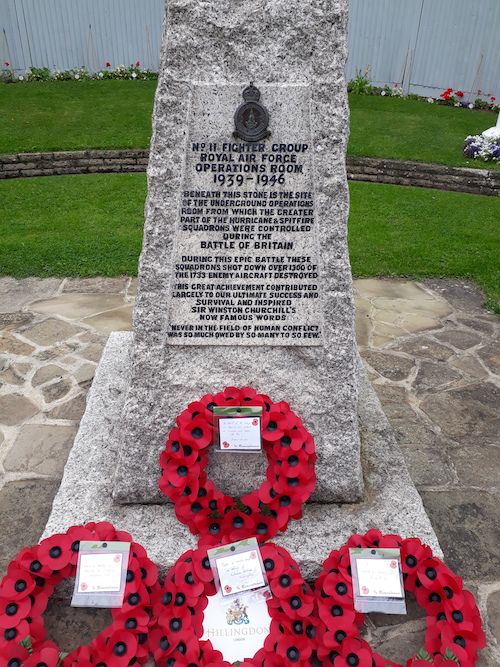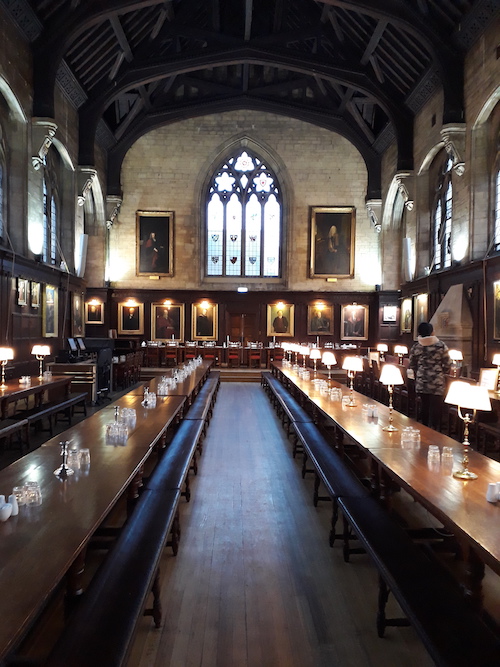My day-trip destination is Oxford, to see three of the less visited but no less impressive university sites. However, on the main route from London there’s an historical gem hidden in West London’s leafy suburbia, known as ‘The Hillingdon Battle of Britain bunker’. Its correct name is HQ of No. 11 Fighter Group, RAF Fighter Command. Like many second world war sites, we can see it exactly as it was when the door was locked after VE Day, May 1945.
This is where No.11 Group coordinated the South Eastern squadrons of Spitfire and Hurricane fighters. Famous airfields such as Biggin Hill, Northolt and Kenley took their command from this Operations Room, ultimately winning the Battle of Britain and remaining 11 Group HQ until the end of the war.

We’re given a tour deep into the bunker itself. Descending into 1940, the history is palpable. We see the original operations table used by the ‘Plotters’ and the ‘tote boards’ with their series of indicator lights (still working!) which communicated the readiness of the young pilots and their aircraft to fly into battle. It’s perfectly preserved and we have a demonstration of how it was operated. During the Battle of Britain defences were stretched to the limit, and when the visiting Winston Churchill saw all the tote board bulbs glowing red he asked the Commander in Chief “what other reserves do we have”? The response was “we have none”.

280 personnel, mostly WAAFs (Women’s Auxiliary Air Force) operated the bunker day and night. It was visited by Churchill on a number of occasions and by General Eisenhower. It was Churchill’s visit here in August 1940 which inspired his famous speech, “‘Never in the field of human conflict was so much owed by so many to so few”.
On climbing the steps back to ground level I briefly visit the fascinating RAF museum, then set off for the 45 minute drive to Oxford.
There’s so much to see in Oxford, but I’ve set my sights on The Divinity School and two of the colleges, Magdalen and Balliol.
Entering the City, the first view is of Magdalen College Tower, from the top of which the choir sings at 6am every May Day, and the bridge over the river Cherwell before it flows into the Thames. Magdalen was founded by the Bishop of Winchester in 1458 and Its alumni include Henry 8th’s Cardinal Wolsey, CS Lewis & Oscar Wilde. It’s the largest of the university colleges and I have a wander through it’s chapel and the spectacular ‘Cloister Quad’, then into the college’s own deer park from where there is one of the best views of the Tower from the water meadow.
My next stop takes me back another 200 years to Balliol, one of the oldest colleges, founded in 1263, with its grand dining hall and leafy grounds. Its western side was once the site of The Catherine Wheel Inn, where the ‘Gunpowder Plot’ to blow up James 1stParliament in 1605 was planned.
The university grew organically during the 1100’s, as opposed to being ‘founded’ on a specific date. The pupils lived in ‘halls’, the private homes of the masters, before the university was formally recognised in 1231. University College, founded 18 years later being the first of the colleges (although there are other contenders for that title)!

As such, there were originally no purpose-built central university buildings, the first being the Divinity School built in the 1400’s, my final stop. With its ornate vaulted ceiling and tall windows lighting up the space, it’s one of the most beautiful buildings to visit. Its main purpose was for the oral examination of the pupils, who would have studied theology, medicine or law, with questions and answers being spoken entirely in Latin. Today it is still used for the students to don their gowns prior to receiving their degrees in the adjacent Sheldonian Theatre, built by Sir Christopher Wren, some 200 years later.It’s time to head back to London, having spanned 700 years of British history, from the founding of its oldest university to the Battle of Britain.
You may be interested in our personal Oxford tours and our Military Tours
Post by Tom, British Tours Ltd Tour Guide
